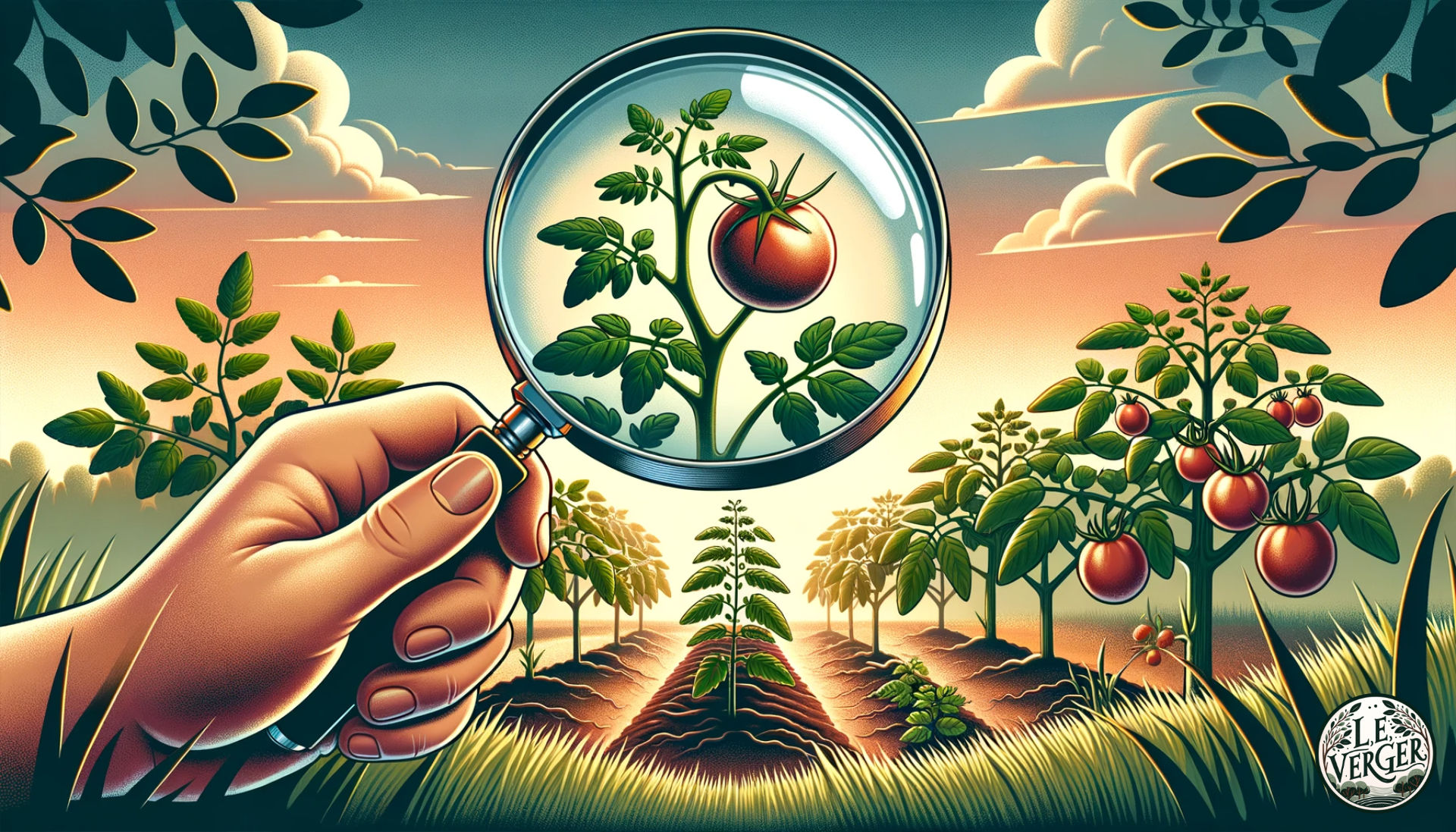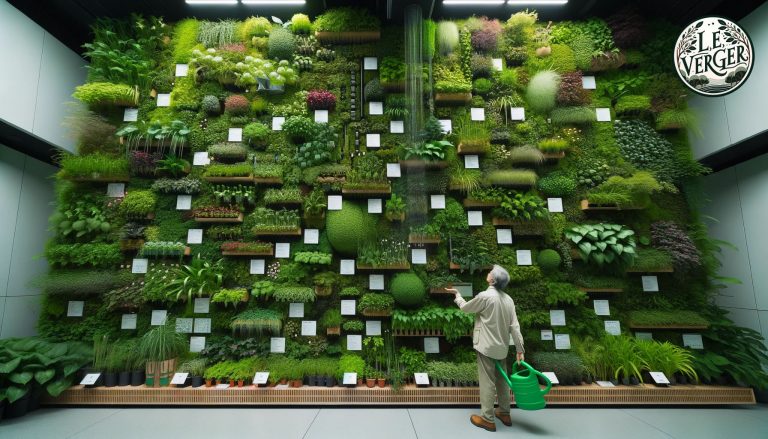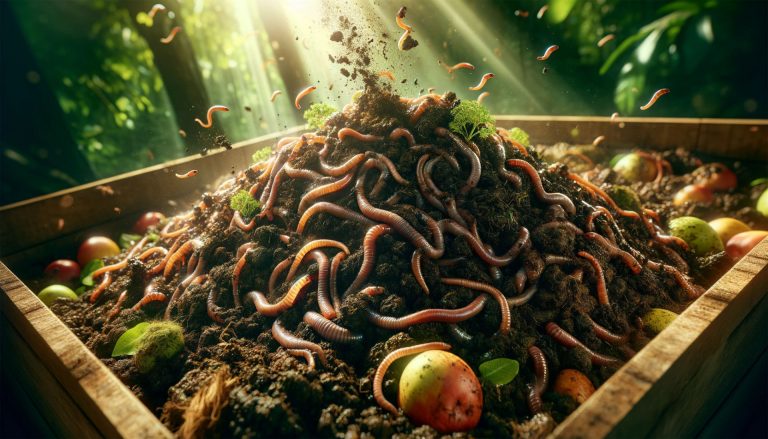Tomato Tales: From Seed to Fruit, The Journey Explored.
Ever wondered how a tiny tomato seed transforms into a juicy fruit? Our guide, Tomato Tales, explores this fascinating journey, offering insights into planting, care, and growth stages.
Do you ever wonder why tomatoes are in so many dishes? From salads to sauces, they’re a real kitchen superstar. In this article, we’ll follow the life of a tomato from its early days as a seed to its juicy, ripe stage as a fruit. Whether you’re a keen gardener or just love a good tomato, this is a journey you’ll want to be part of.
History of the Tomato
Believe it or not, the tomato has quite an adventurous past. It’s thought to have originated in South America, making its way to Europe in the 16th century. At first, people were wary of this ‘exotic’ fruit, even thinking it was poisonous. But it didn’t take long for it to become a beloved part of many cuisines. From Italy’s tomato-based pasta sauces to the UK’s much-loved baked beans, the tomato has truly gone global.
So next time you enjoy a tomato, think of the long journey it has made, both historically and geographically, to be part of your meal.
Choosing the Right Tomato Seed
When it comes to growing tomatoes, it all starts with choosing the right seed. There are many types of tomato seeds out there, from cherry to beefsteak. The right choice depends on your taste and what you want to use them for. Love salads? Cherry tomatoes might be your best bet. Into making sauces? Then go for a plum tomato variety.
Tomato Type |
Best For |
Flavour Profile |
|---|---|---|
| Cherry | Salads, snacking | Sweet, juicy |
| Beefsteak | Sandwiches, grilling | Meaty, full-flavoured |
| Plum | Sauces, stews | Rich, less watery |
| Heirloom | All-round use | Varied, complex |
| Grape | Salads, roasting | Sweet, less acidic |
| Green Zebra | Salsas, chutneys | Tangy, zesty |
It’s not just about flavour, though. Your local climate and the space you have available also play a role. Some tomato plants love the heat, while others can tolerate a bit of chill. Make sure to read the seed packet or consult local experts to pick a variety that suits your conditions.
Choosing the right seed sets the stage for a rewarding tomato-growing experience, so take your time to make a thoughtful decision.
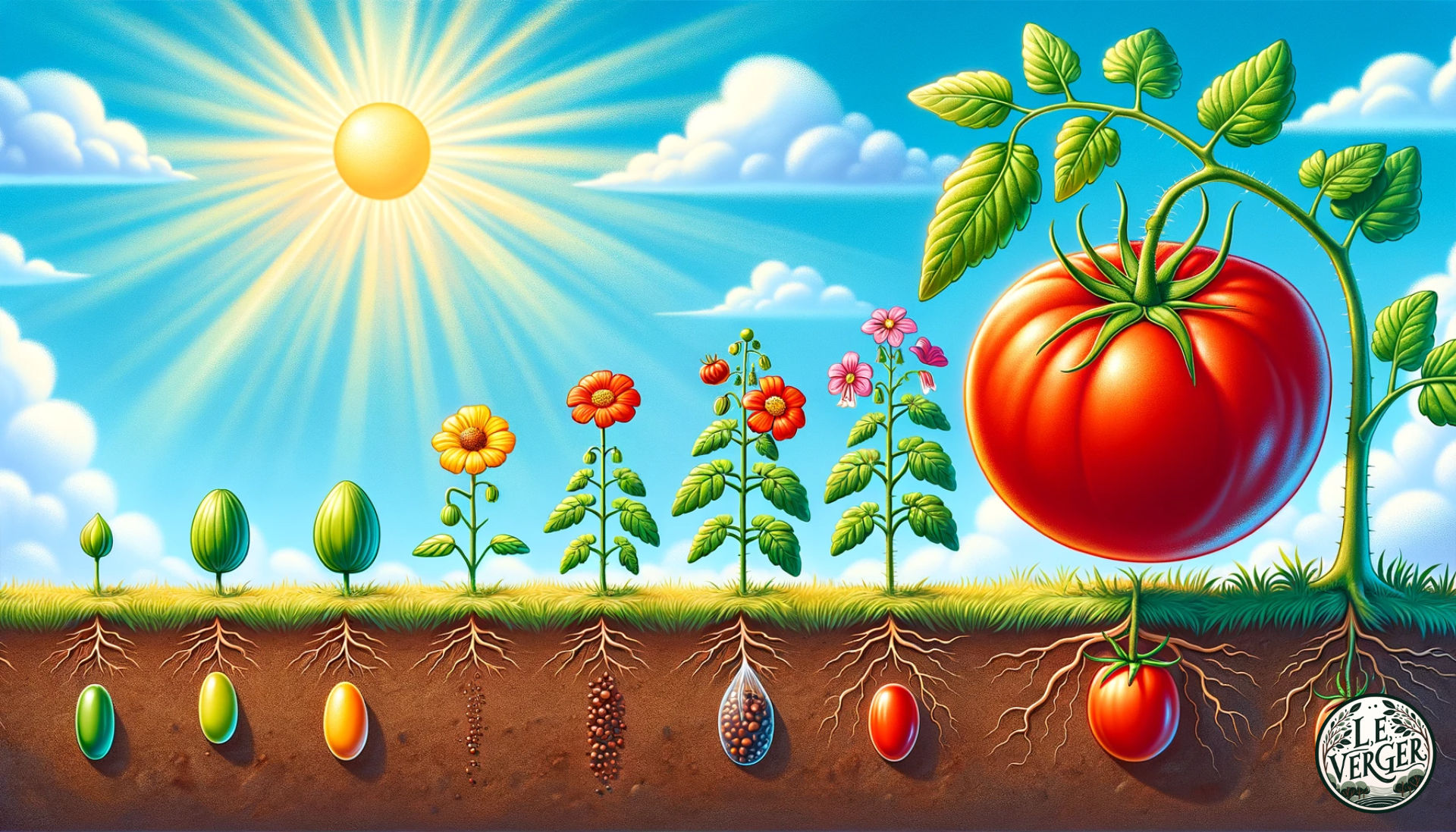
Planting Tomato Seeds
Now that you’ve picked your seed, let’s get it in the soil. Timing is crucial; in the UK, it’s often best to start germinating your seeds indoors or in a greenhouse in late winter or early spring. This gives them a head start before the weather warms up.
For UK Gardeners:
If you have a greenhouse, take advantage of it. Sow the seeds in small pots filled with seed compost and place them in a propagator to keep the humidity high. No greenhouse? No worries. You can also start seeds indoors on a sunny windowsill.
Climate Guide for Global Gardeners:
- Tropical Areas: Aim for the cooler months and choose heat-resistant varieties.
- Dry Climates: Consider varieties that are drought-resistant and plan for regular watering.
- Cold Regions: Opt for cold-hardy types and consider a longer indoor germination period.
Soil quality is another vital aspect. Go for a well-draining soil rich in organic matter. A pH level between 6.0 and 6.8 is ideal, so consider a soil test kit to check.
To plant, dig a hole about twice the size of the seed. Place the seed in the hole and cover it lightly with soil. Water well, but avoid flooding; tomatoes dislike waterlogged soil.
Temperature matters too. Tomatoes love warmth, so aim for a spot that gets at least 6-8 hours of sunlight per day, especially if you’re in the UK where sunlight can be a bit scarce.
By paying attention to these details, you’re giving your tomato plants the best chance for strong, healthy growth.
Caring for your Tomato Plant
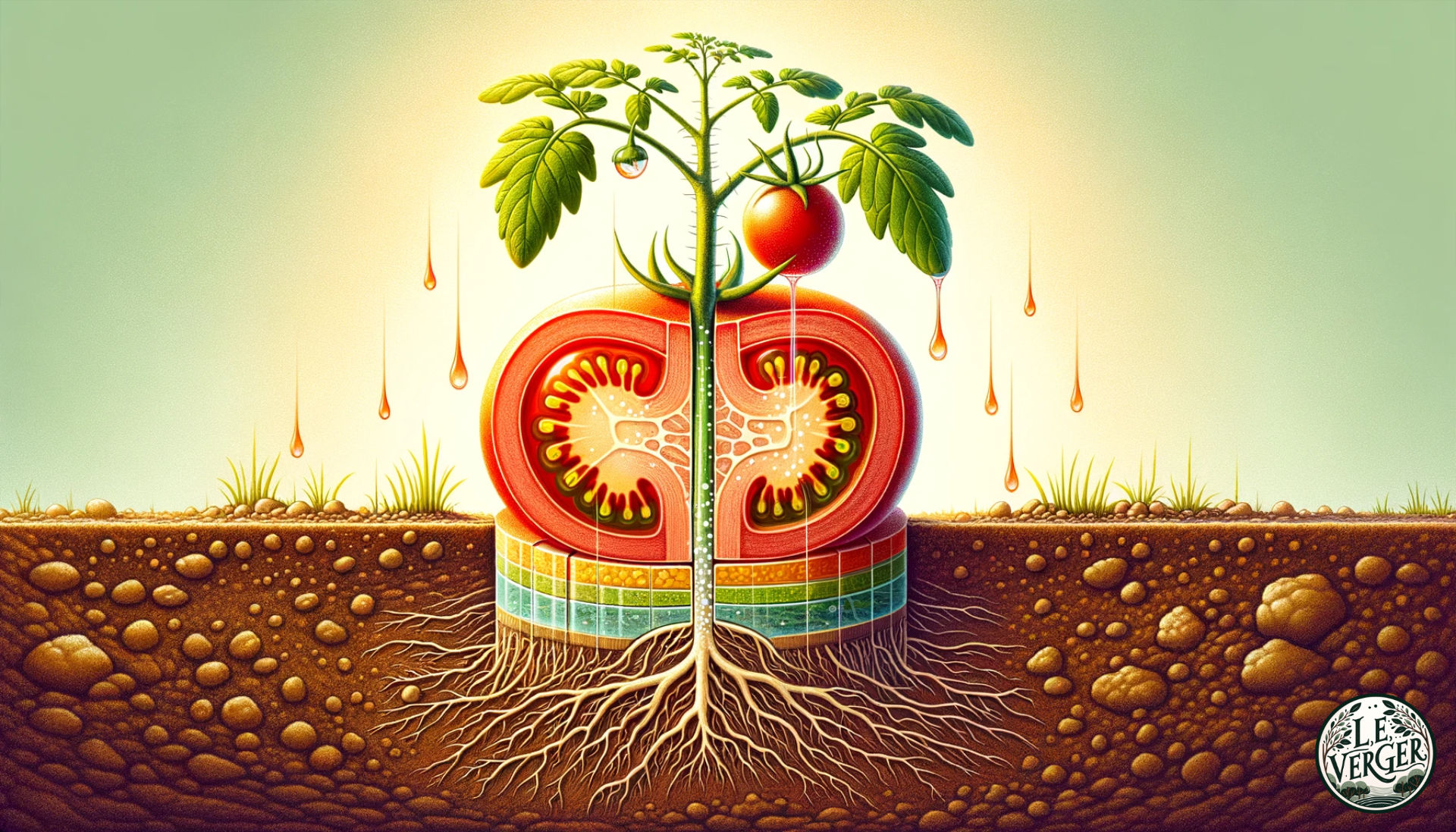
Once your seed is in the ground and you’re seeing some growth, it’s time to focus on care. Regular watering is key, but how much you water can vary. In the UK, where rainfall is more frequent, you may not need to water as often. But in drier climates, daily watering might be necessary.
Watering Tips:
- In the UK, water once a week unless there’s been significant rainfall.
- In drier climates, water daily, ideally in the early morning or late afternoon.
Nutrients are also crucial for your plant’s health. Tomatoes are hungry plants, so a good fertiliser can make all the difference. Use a tomato-specific fertiliser every two weeks for best results.
Common Problems and Solutions:
- Yellow leaves: Often a sign of nutrient deficiency. Check your fertiliser.
- Spots on leaves: Could be a fungal issue. Remove affected leaves and consider a fungicide.
Another aspect of care is support. As your plant grows taller, it’ll need some help standing up. Stakes or tomato cages are a good idea to keep the plant upright and the fruit off the ground.
Remember, every plant is unique, so pay attention to its needs. Consistent care will reward you with a bountiful harvest.
The Tomato Fruit Appears
After all the hard work and patience, one of the most exciting moments is when you spot the first tiny green tomatoes on your plant. It’s a sign that your efforts are paying off, but your job isn’t done yet.
As the fruit starts to grow, keep an eye out for its colour. In the UK, where sunshine can be limited, placing your plant in the sunniest spot will help your tomatoes ripen faster. A fully ripe tomato will be easy to pluck off the vine, so avoid tugging too hard.
Picking and Storing Tips:
- Pick your tomatoes when they have a vibrant colour and give slightly to the touch.
- For storing, keep them at room temperature to preserve flavour. Avoid the fridge as it can make them mealy.
In terms of when to harvest, timing can vary depending on the type of tomato and local weather conditions. Cherry tomatoes may be ready in as little as 50 days after planting, while beefsteak types might take up to 85 days.
Your first bite into a homegrown tomato will make all the care and waiting worthwhile. Enjoy the fresh, delicious taste that only comes from something you’ve grown yourself.
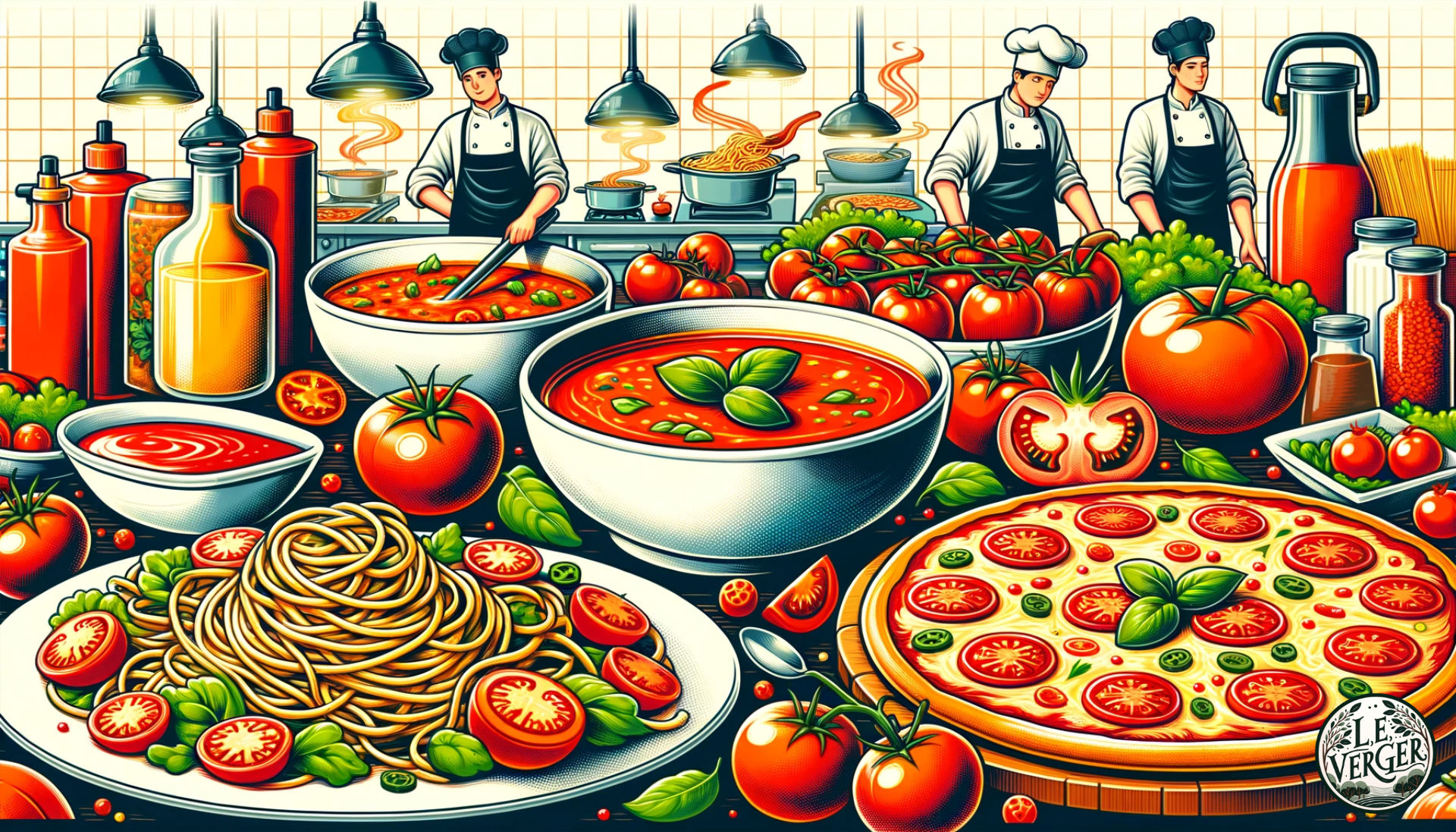
Tomatoes in Cuisine
Now that you’ve harvested your tomatoes, the fun begins: cooking! Tomatoes are versatile and a staple in many UK dishes, such as Full English breakfast, salads, and sauces.
Classic UK Dishes Featuring Tomatoes:
- Full English Breakfast: Grilled tomatoes go well with sausages and bacon.
- Tomato Soup: A warm choice for cold British days.
- Ploughman’s Lunch: Fresh tomatoes are great with cheese and bread.
Simple Recipe: Tomato Basil Salad
Ingredient |
Amount |
|---|---|
| Fresh tomatoes | 4 medium-sized |
| Basil leaves | 1 handful |
| Olive oil | 3 tbsp |
| Salt | To taste |
| Mozzarella | 200g |
Instructions:
Slice tomatoes and mozzarella. Layer them on a plate, sprinkle with fresh basil, salt, and a drizzle of olive oil.
Cooking Tips:
Roasting your tomatoes with a sprinkle of salt and olive oil can concentrate the flavour.
Around the World with Tomatoes:
- Italy: Think pasta sauces like marinara.
- Spain: Gazpacho is a chilled tomato soup.
- India: Tomato curry is rich and spicy.
Cooking Tip:
Choose tomato varieties that suit your recipe. Cherry tomatoes are good for salads, while beefsteak tomatoes excel in grilling.
Frequently Asked Questions (FAQ)
- When is the best time to plant tomatoes in the UK?
Late winter to early spring is ideal for indoor germination. Move them outside once the risk of frost has passed. - How often should I water my tomato plants?
In the UK, once a week is usually enough unless there’s significant rainfall. In drier climates, daily watering may be necessary. - What’s the ideal soil pH for tomatoes?
Aim for a slightly acidic soil with a pH level between 6.0 and 6.8. - Why are my tomato leaves turning yellow?
Yellow leaves can indicate nutrient deficiency. Consider using a tomato-specific fertiliser. - Can I grow tomatoes in pots?
Yes, tomatoes can thrive in pots. Just make sure the pot is at least 18 inches in diameter and has good drainage. - How can I make my tomatoes ripen faster?
Place them in a sunny spot. In the UK, where sun can be scarce, pick a spot that gets at least 6-8 hours of sunlight. - What dishes can I make with my homegrown tomatoes?
Tomatoes are versatile. They’re great in traditional UK dishes like Full English breakfast and tomato soup, but also shine in global recipes like Italian pasta sauces and Spanish gazpacho. - Can I freeze my tomatoes?
Yes, you can freeze tomatoes. However, the texture may change, making them best for cooked dishes once thawed.
This wraps up our journey from seed to fruit, exploring the world of tomatoes in a comprehensive way. We’ve covered planting, care, harvesting, and even how to make your homegrown tomatoes the star of your meal.
Conclusion
Growing tomatoes is a rewarding experience that offers a fresh and delicious payoff. From choosing the right seed to understanding the ideal planting conditions, right through to the joy of harvesting and cooking with your homegrown tomatoes, each step is a journey worth taking. We hope this guide has given you the tools and inspiration you need to grow your own tomatoes, whether you’re in the UK or anywhere else in the world. Happy gardening and bon appétit!

